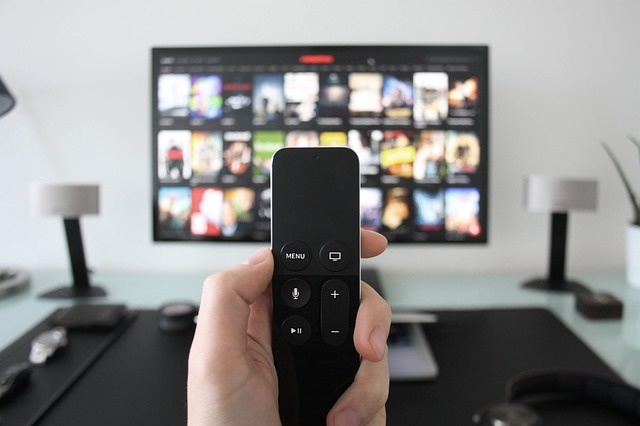
How can you tell if your social campaign is broken?
Let’s look at a long-running ‘sponsored’ social campaign for some warning signs.
In the case of Domo, their long-running sponsored ad campaign promises an alternative to Excel spreadsheet, robust data visualization, and actionable intelligence.It’s not a bad ad, at first glance it successfully:
- identifies a pain point for the audience (spreadsheet ‘rows and columns’)
- promises a desired outcome/solution: ‘instant insights’
- the headline grabs attention claiming to give ‘Excel Reporting Like You’ve Never Seen Before’, naturally raising curiosity and the desire to see something new
Attention grabbing and to the point. Focused on a specific audience.
Do you use Excel to write reports? Are you tired of wrestling with pivot tables and charts? Underwhelmed by Excel’s native data visualization? Check THIS out!
If none of these pain points speak to you, that’s fine – you’re not the audience.
Consider this: For just the ad itself you need to line up (at least) your audience research, a valuable offer of information or service, and an attention grabbing headline and image.
That’s just for starters – just to earn the click. They’ve done all that.
On top of this, the ad has a ton of social proof – 988 Likes and 121 Comments.
To accumulate that volume of social proof this particular ad has been running for months – many months. I say that from personal experience encountering it over and over again.
That’s good and bad.
A Closer Look at Social Proof
So far. So good. But then things change – and take a big turn for the worse.
Remember, this ad has been running for a long time.
People notice. People who don’t like getting spammed.
Mistake #1: Letting an ad run so long that it antagonizes your target audience.
The ad has run for months on end, long enough to annoy members of the targeted audience.
As of this time, the ad is still running. Among other things, this could mean that:
- Annoying or not, the ad works and the social backlash is worth the overall success
- The ad is running on auto-pilot, un-monitored, and Domo isn’t paying attention to any of this criticism
Mistake #2: Avoiding the conversation.
Domo is ignoring their audience’s comments at their own peril. This is social, after all – nowhere in the comment stream can you find a single comment from a Domo representative engaging with commentators – positive or negative.
Even the most inexperienced assistant manager at the smallest hotel on Travelocity knows you have to reply to social comments. Responding to negative comments thoughtfully helps diffuse land-mines and turn the dialogue in the direction you desire – it also allows you to show you are open to listening and learning from your audience. Replying to constructive positive comments or requests for help is just good manners
It doesn’t matter how well the ad itself performs if the comment space undermines the company and the product without even a reply by the sponsoring company.
Mistake #3: A bad post-click experience.
Other comments, like the one below, point out problems with the experience in Domo’s sales funnel while some compare Domo directly with their competitors.
It doesn’t matter how well the ad performs if the post-click experience and funnel fumbles the sales process. It doesn’t matter if you’re selling a product, a service, a job opportunity, even an idea.
Your ad makes a promise – of information, of utility, of something. Do you have the message and experience in place after people click on your ad to move them through the right journey that meets their needs?
Where do you go from here?
There are people who will say you should change your social ads on a regular basis to avoid audience fatigue. Others will say you should run an ad until the metrics show it isn’t working anymore. Could be a week, could be a quarter, could be a year.
As long as the ad performs well, I say run with it.
Either way, you should listen to, and reply to, your audience. Take advantage of the full range of benefits that social offers. That means going beyond hyper-targeted audience segmentation and listening to, engaging with, your audience.
In this case, the target audience is giving Domo direct market feedback about how they should modify their ad campaign and their post-click sales process. And Domo appears to be turning a deaf ear.
They should be engaging directly with their most vehement critics and looking at how their post-click process compares to what their audience requires to make a purchase decisions (e.g., detailed information, a free trial, etc). If they can’t provide those for some reason, they should be able to build an experience that balances out against those deficits.
Three mistakes that are easy to address:
- Letting an ad run so long that it antagonizes your target audience.
- Avoiding the conversation.
- Providing a bad post-click experience.
Maybe they don’t need to change a thing and they’re laughing all the way to the bank.
Maybe they’re listening to the feedback and making changes right now.
Maybe the campaign in question has already been pulled.
That’s a lot of maybes – but the audience feedback is rock solid.
Are you running a ‘broken’ social ad campaign? If this were your campaign – your feedback – what would you do?
Image (c) Stephen Harlan – https://www.flickr.com/photos/gogostevie/527637163/







